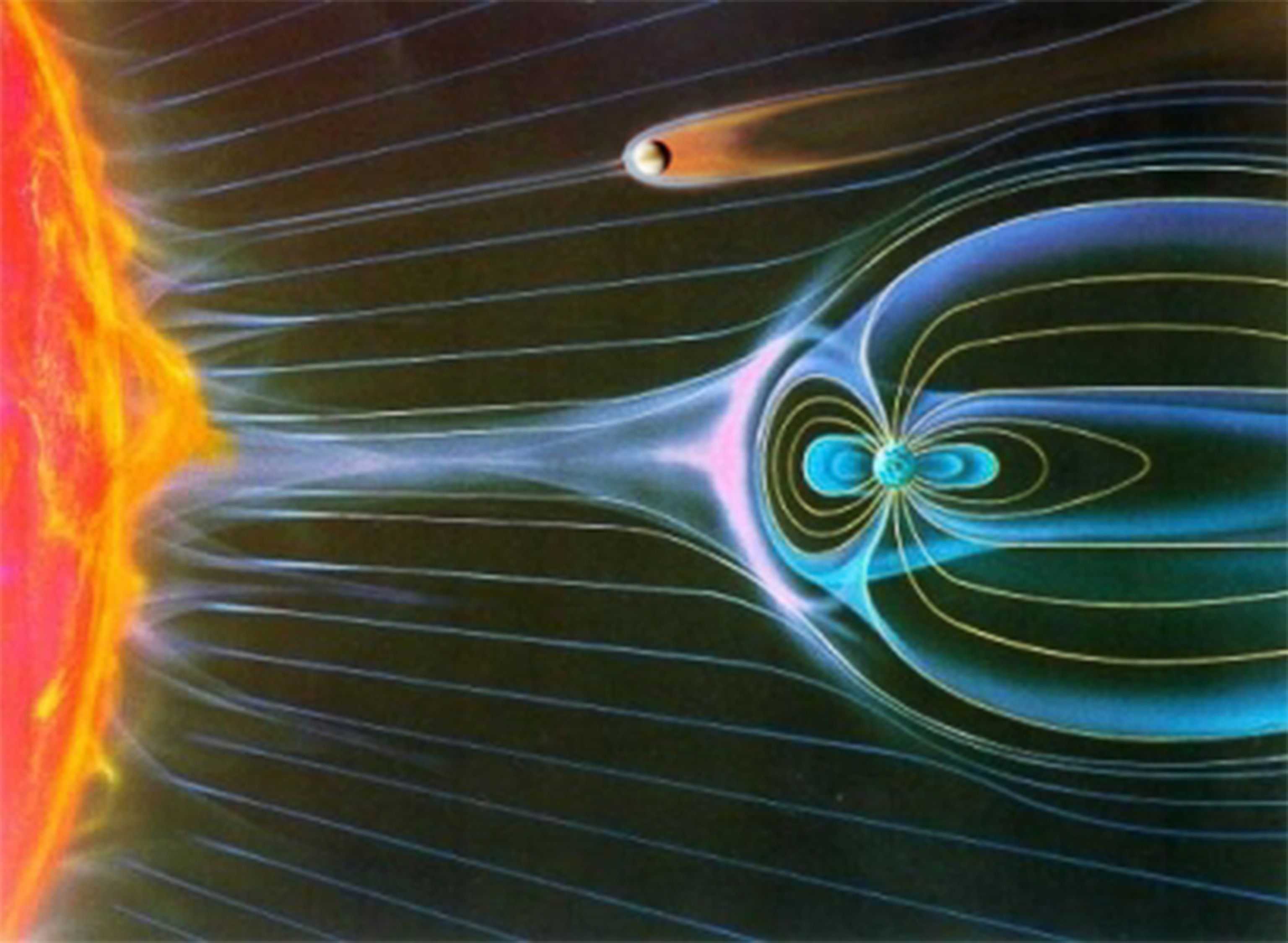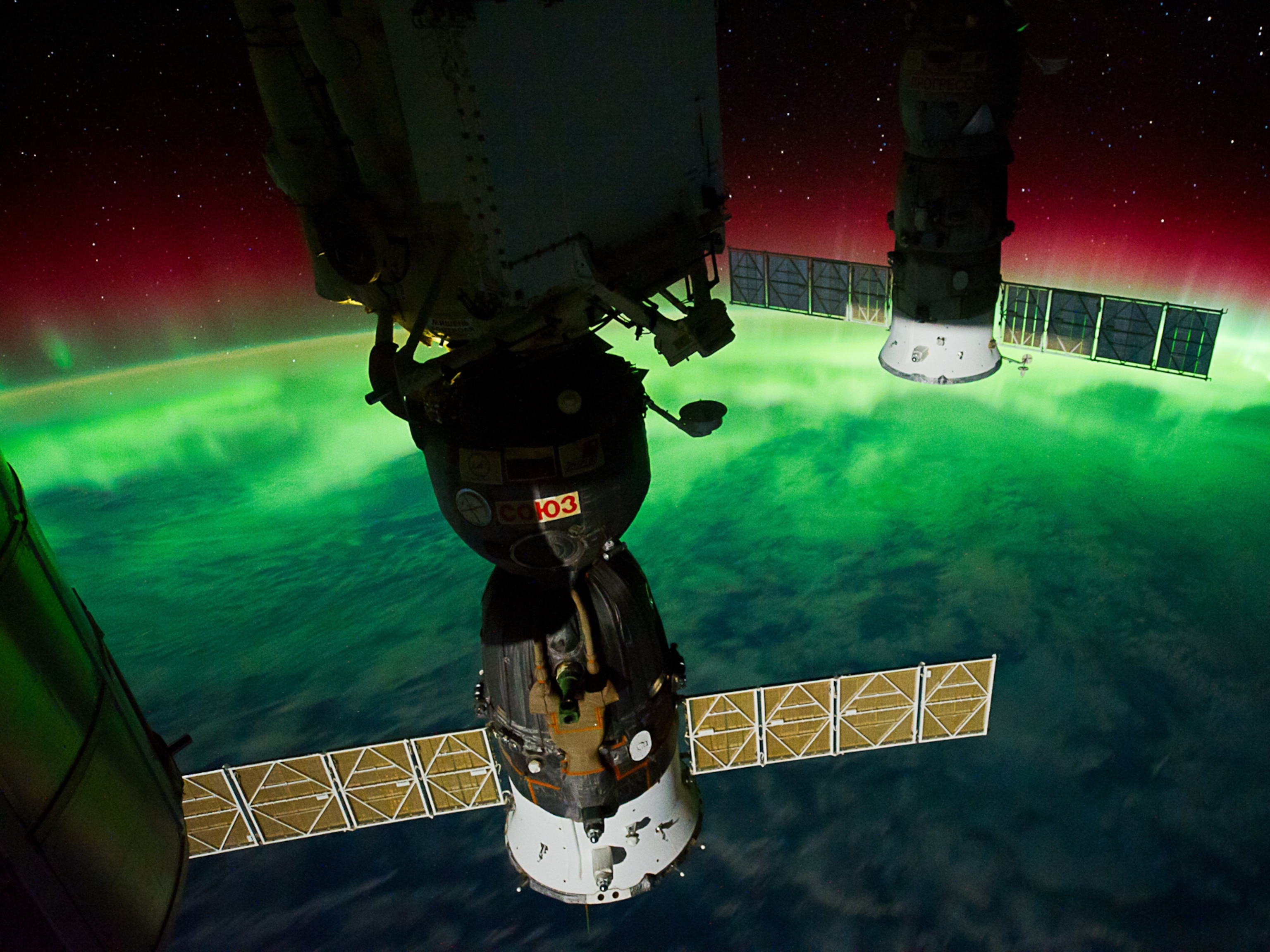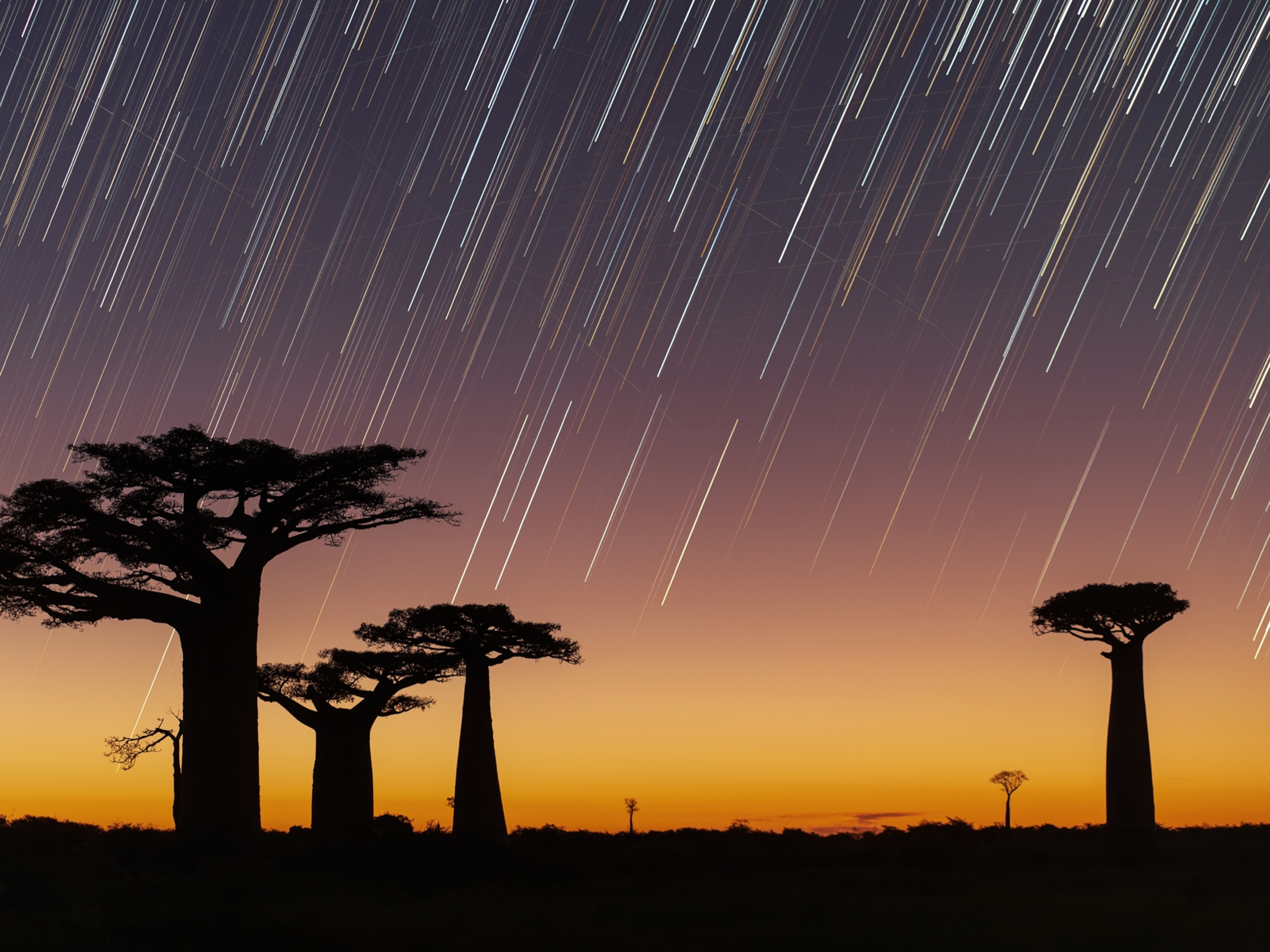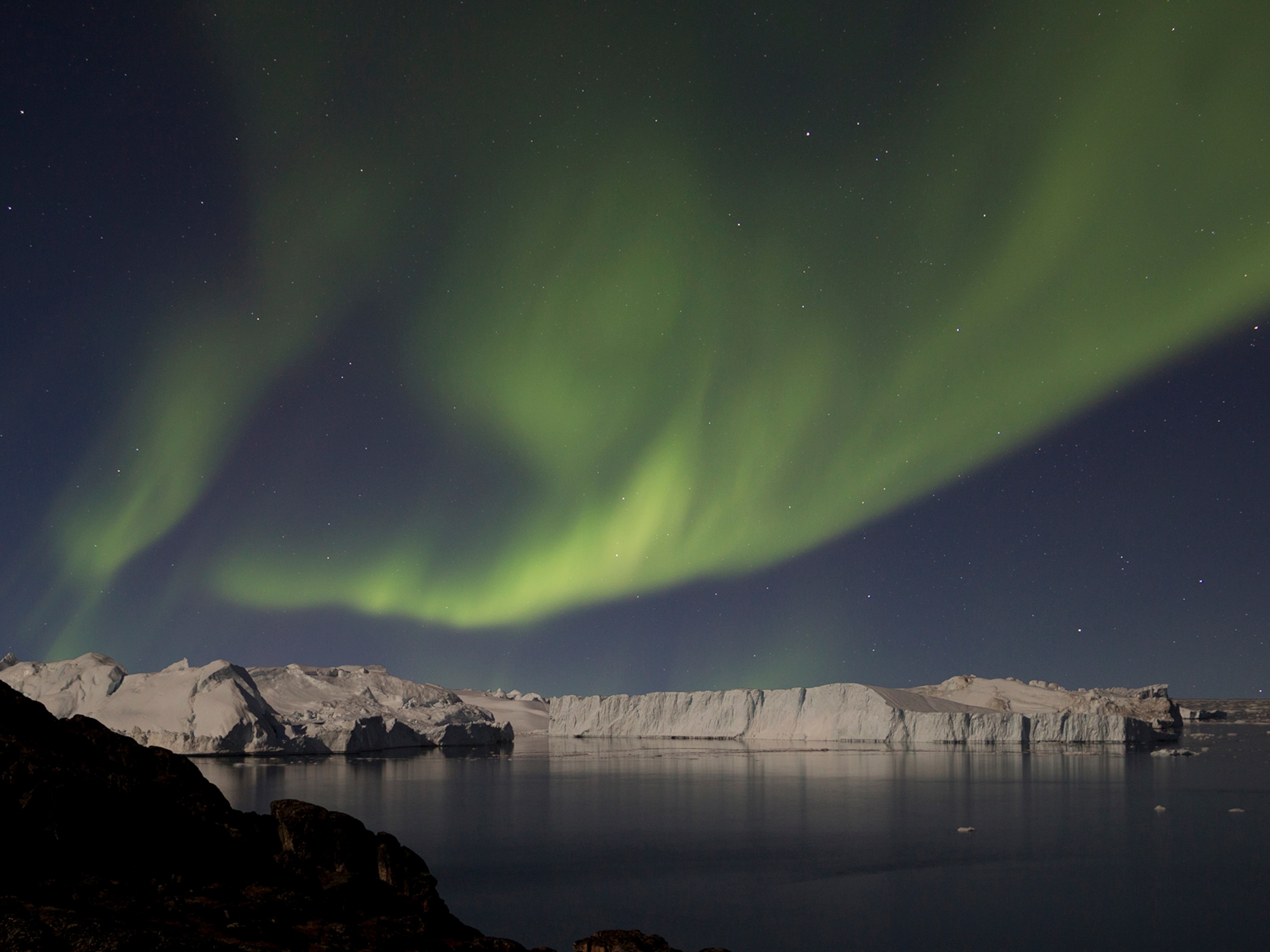
'Solar Sneezes' May Trigger Auroras Around Venus
European spacecraft Venus Express catches glimpse of lights while using Venusian atmosphere to brake its orbital speed.
TUCSON—Green-tinted northern lights may bloom even on Venus, astronomers said on Tuesday, reporting the first hints of auroras unleashed deep within the atmosphere of the cloud-swathed world.
The observation suggests that powerful solar blasts may even trigger auroras on magnetically dead worlds, such as Venus and Mars, a surprise to scientists. (Related: "Venus Is More Than Just a Cautionary Tail.")
" 'No, not possible,' they would say. But we argue otherwise," says astronomer Candace Gray of New Mexico State University in Las Cruces, who reported the results at the American Astronomical Society's Division for Planetary Sciences meeting. "A 'solar sneeze' might hit a planet hard enough to trigger auroras," she says.
Mistaken for decades as nightglow—a somewhat faint nightly luminescence in the high atmosphere powered by chemistry—the Venusian auroras, like Earth's, actually result from solar storms, she says. (Related: "Aurora Pictures: See Best Fall Photos of the Northern Lights.")
The results rest partly on observations from the Apache Point Observatory in Sunspot, New Mexico, of green light springing up strongly on Venus after solar flares that included coronal mass ejections—the solar sneezes—which are outbursts of charged particles fired off the sun's surface.
More recently, observations detected changes in Venus's atmosphere following a solar sneeze. During the event, electrons in the atmosphere sharply dropped their regular emission altitude from 87 miles (140 kilometers) high to 75 miles (120 kilometers) high, suggestive of an aurora.
"We think this is a genuine auroral event," Gray says. A green glow from electron emissions tied to oxygen atoms dominates the colors of Earth's auroras, she notes. Nightglow is expected at lower altitudes on Venus, she adds.
Missing Magnetic Field
Now in orbit around the second planet from the sun, Venus Express lowered its altitude by banking off the planet's atmosphere, says the European Space Agency's Håkan Svedhem, a spacecraft scientist. Without much trouble its altitude dropped from about 106 miles (170 kilometers) high to a cloud-skimming 81 miles (130 kilometers) high.
If the craft reaches a low-enough altitude, it might see hints of a heretofore hidden, weak intrinsic magnetic field around Venus that might make the aurora claims more palatable. (See "Will Venus Express Crash or Keep Decoding Its Planets Secrets?")
That's because on Earth, northern lights are driven by the planet's strong magnetic field. Powered by the dynamo at the Earth's core, our planet's magnetic field deflects solar storms and instead funnels the blast to the poles, where it interacts with the high atmosphere to spawn auroras.
Venus has only a weak magnetic field, induced by the solar wind directly striking the planet's atmosphere. In 2012, Venus Express showed that this induced field creates a magnetic "tail" trailing the planet.

Given this discovery, Gray and her colleagues suggest that powerful solar storms that strike Venus directly may "snap" this magnetic tail, causing a scrambling of the planet's induced magnetic field. This scrambling induces the oxygen atom auroral emissions hinted at by the Venus Express results.
Real proof of her idea might come from MAVEN, the NASA mission now orbiting Mars, she says. Equipped with similar instruments as Venus Express, it will see if solar storms striking Mars trigger identical green-glowing emissions in the Martian sky. "We're seeing a lot of solar storms. One is going to hit Mars sooner or later, and then we will really want to see what happens," she says.
Follow Dan Vergano on Twitter.





